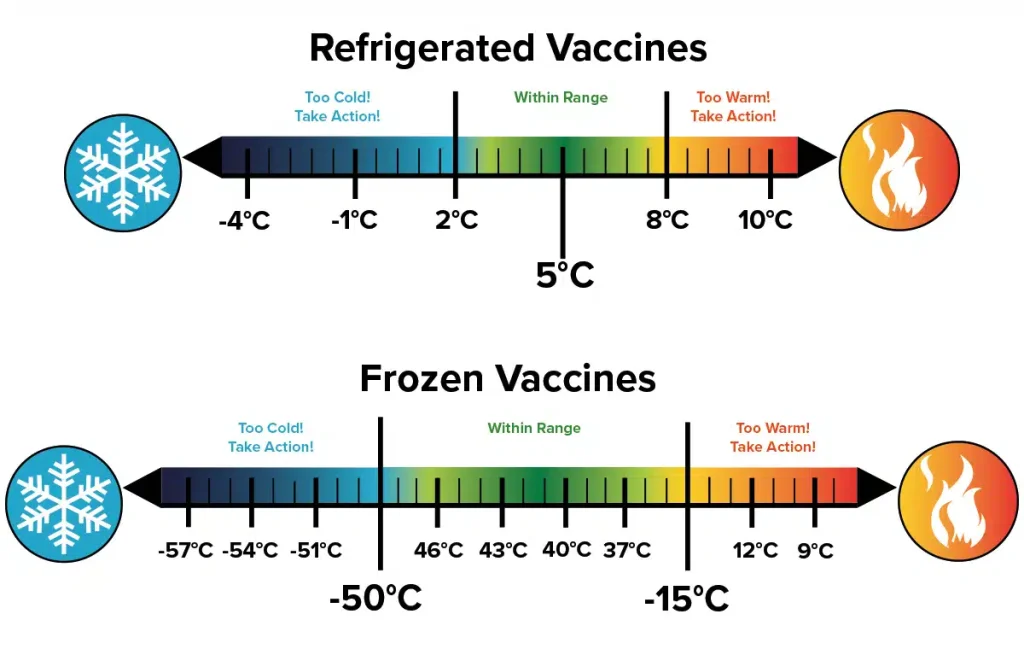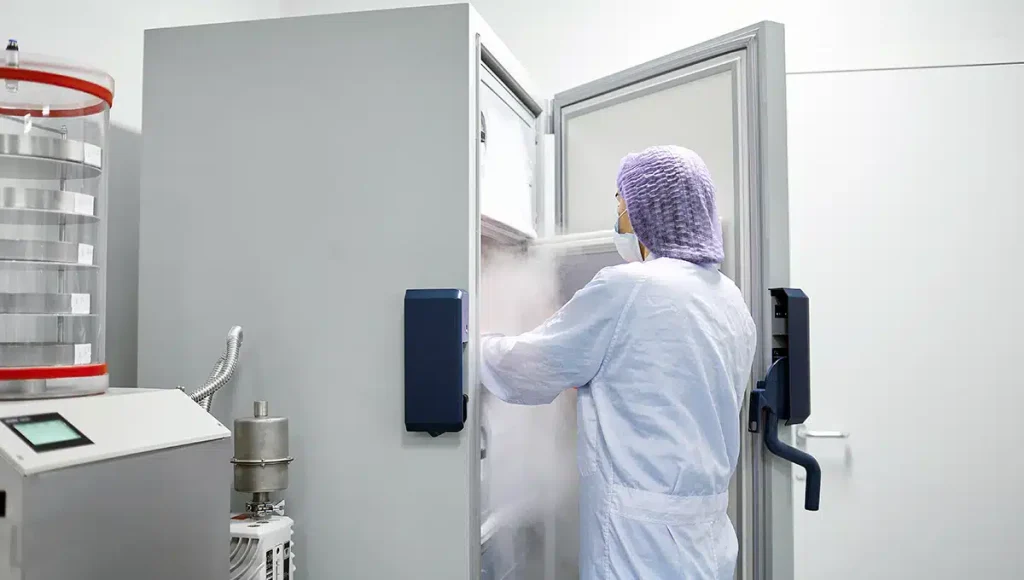In the world of healthcare, the proper storage of vaccines is a critical aspect that ensures their efficacy and safety. Whether you’re storing vaccines in refrigeration units or freezers, understanding and adhering to the best practices is vital. This guide combines essential tips for storing vaccines at both refrigerated and frozen temperatures, focusing on Celsius (°C) guidelines.
1) Unpacking and Organising Vaccines
The journey to effective vaccine storage begins the moment vaccines arrive at your workplace. Here’s what you need to do immediately:
- Prompt Unpacking: Remove vaccines from their shipping packages as soon as they arrive.
- Adequate Air Circulation: Use trays or containers to store vaccines, ensuring good airflow around them.
- Expiration Date Management: Arrange vaccines with the nearest (or earliest) expiration dates at the front. This practice is crucial for using vaccines efficiently and avoiding waste.
- Light Protection: Keep vaccines in their original packaging to safeguard them from light.
- Categorisation: Organise and label the vaccines according to their type and source, such as Vaccines for Children (VFC) or private sources.
2) Temperature Control
The correct temperature is critical in vaccine preservation. Here are some guidelines:
- Refrigeration Units: Maintain an optimal temperature of 5°C for refrigerated vaccines. Never freeze refrigerated vaccines – except for the MMR vaccine which can be stored in the fridge or freezer.
- Freezer Units: Set the thermostat to the factory or middle temperature for frozen vaccines.
- Temperature Monitoring: In both refrigerators and freezers, report any out-of-range temperatures immediately.
3) Optimal Storage Practices
Adhering to specific storage practices can enhance the efficacy of vaccine preservation:
Do:
- Ensure Doors are shut: Keep the fridge or freezer door closed to minimise temperature fluctuation.
- Use Water Bottles: Place water bottles in the unit to stabilise temperatures, especially during frequent door openings and power outages. Label these bottles with “Do Not Drink.”
- Space Management: Maintain 2-3 inches of space between vaccine containers and the unit walls for better air circulation.
- Safety Precautions: Display “Do Not Unplug” signs on the fridge and power socket to prevent accidental power disruptions.

Don’t:
- Avoid Dormitory-Style Fridges: These are not suitable for storing vaccines due to temperature instability.
- Exclusive Use: Keep the unit exclusively for vaccines. Do not store food or drinks in it.
- Avoid Door Shelves: Do not store vaccines on door shelves or the floor of the fridge/freezer, as these areas are prone to inconsistent temperatures.

Summary
By following these guidelines for refrigerated and frozen vaccine storage, healthcare providers can ensure that vaccines remain potent and safe for use. Proper storage is not just a protocol; it’s a commitment to the health and safety of the community. Whether in a refrigerator or a freezer, maintaining the right conditions for vaccines is essential in the fight against preventable diseases.

 Fast Delivery
Fast Delivery  Global Compliance
Global Compliance  Long Term Support
Long Term Support